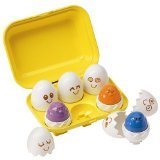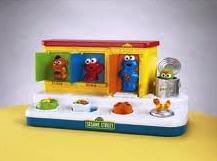Language Development for Toddlers: Set it Up
Language Development for Toddlers: Set it up
Setting it up means you have designed an environment or situation that supports or fosters communication. Doing so motivates your child to talk.
Our goal is to: Promote child initiated communication.
This strategy is used by many speech language pathologists because it’s very effective. Many of us are so good at it that it doesn’t even seem intentional to those observing. But, believe me folks, it’s very intentional.
As parents, we take pride in knowing our children so well that we can predict and anticipate their every whim. Knowing our child’s needs and wants can sometimes also prevent meltdowns and tantrums. Saving my sanity is very important, especially during particularly hectic days. Yet, when we give our children everything that they need or want BEFORE they even ask for it, we’re eliminating an excellent opportunity to promote communication. Try not to over anticipate what your child wants or needs. Catching yourself in the moment is tricky. So, how can you set it up?
First, we must motivate our child to communicate.
Ask yourself: “What motivates my child?”
Does your child have a favorite toy?
A favorite snack?
A favorite song?
A favorite book?
Build up a play routine that your child enjoys and will want to participate in. Doing so, allows him to initiate communication by knowing what will happen next.
Here are some examples:
Toys
There are so many wonderful toys that can be set up to temp communication from your child.
Currently, these two are my daughter’s favorite toys:
Fisher-Price® Sesame Street Singing Pop-Up Pals


Kerrigan is 13 months old. As she’s been getting older, she’s become more independent, curious and persistent in her play. She also enjoys toys that open and close and contain manipulatives or parts that she can pull out, touch, explore, and umm throw around her playroom (we’ll get to cleaning up a little later).
I purposefully organized her play room so that she can play independently and keep herself occupied for short intervals. Being a speech pathologist, I also get pleasure by throwing in a wild card every so often; a highly motivating toy that will require some assistance to open or manipulate.
So, let’s take the eggs –
If I want to foster independent play (or, if I want to finish making dinner) – I leave the egg carton open. But, if I want to tempt her to communicate, I close the egg carton because I know at this point in her life she’ll need me to help her. This is a perfect example of how to set it up. NOTE: I only close the egg carton when I’m in the room and in close proximity to her. I don’t want to make her frustrated. I want her to think , “Oh, I need mommy’s help. Let me ask mommy for help.”
The Seasame Street Pop Up Toy is a fantastic toy that I purchased at my neighbor’s garage sale. Kerri loves it. Since this toy is highly motivating, I have built a play routine so that she knows what to do. First, we’ll knock on the door. Kerri will imitate my knocking gesture, then she will try to open the door. Once the door opens, we wave hello and I say, “hi elmo”. The set up here is that she’s very motivated to watch the door open and wave hi to the characters. Sometimes she even says, “hi”. With this toy, she can request for help if needed, but she can also perform an action or two (knocking, waving) because she has seen my model and it’s set up into the play routine. When we started playing with this toy, she was responsive to my models. Then, as she became familiar with the play routine, she started initiating the gestures (knocking and waving) on her own.
To recap:
1. Find something motivating for your child
2. Show your child what to do (eggs – request open/pop-up toy – knock, wave)
3. Be consistent and predictable so he or she knows what to do
4. Have fun!!
Think about your child’s favorite toy? How can you “set it up” so that he or she will initiate communication?
Reminder: Build a play routine around your child’s interests to increase his or her motivation and desire to communicate.
The post Language Development for Toddlers: Set it Up appeared first on My Toddler Talks.





